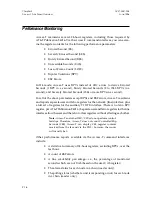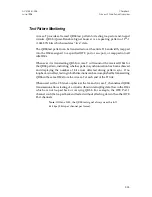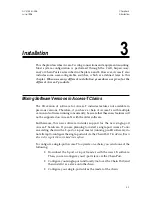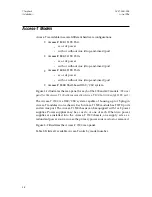
DTE Channel Loopbacks
This section describes the loopbacks available at the individual DTE channels.
The circled number corresponds to the loopback path illustrated in Figure 2-6.
Channel-Side DTE (CS DTE) Loopback
①
When a CS DTE loopback is in effect, the signal from the DTE is looped back to
the DTE at the Channel Interface connector. Since the looped signal does not
pass through Access-T, this signal is useful in testing the operation and connec-
tion of the DTE.
When a CS DTE loopback is activated, the transmit clock replaces the receive
clock. Then, when the loopback is removed, the receive clock switches back to
its original source.
Channel-Side Line (CS Line) Loopback
②
When a CS Line loopback is in effect, the signal from the line is looped back at
the Channel Interface connector. Since the DTE data includes all the mapped
time slots, CS Line loopbacks provide end-to-end testing which includes the
line-side functions of the Access-T.
When a CS Line loopback is in effect, the receive DTE data and clock replace the
transmit DTE data and clock. When the loopback is released, the transmit clock
switches back to its original source.
CS Line loopbacks can be activated either locally or remotely.
Line Loopbacks
Various loopbacks of the T1 circuitry can be controlled directly at the near-end
(local) Access-T or indirectly, via in-band or data link codes, at the far-end
(remote) Access-T. The loopback commands sent to the far end are standard and
thus will control loopbacks at any CSU or DSU supporting standard in-band or
data link loopback commands.
Data-Side DTE (DS DTE) Loopback
③
When a DS DTE loopback is in effect, the T1 payload is redirected toward the
DTE just before entering the network. DS DTE loopbacks are useful for testing
the local Access-T’s multiplexed data.
Chapter 2
ACST-0351-005
Access-T Functional Overview
June 1996
2-22
















































